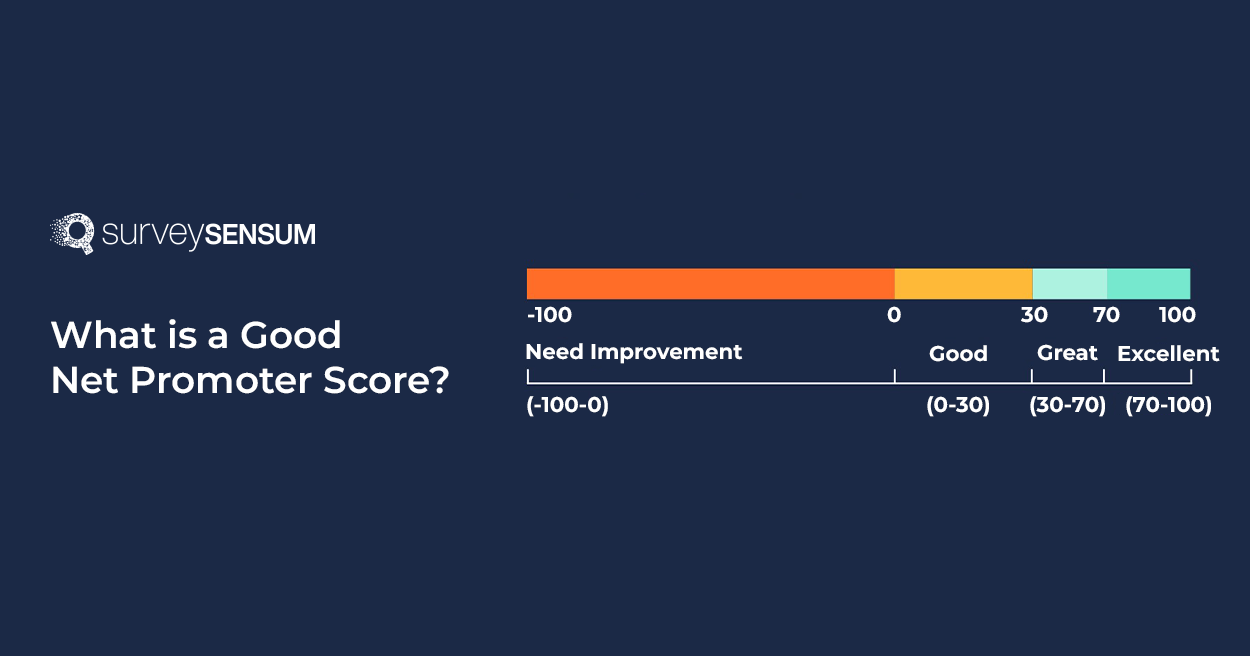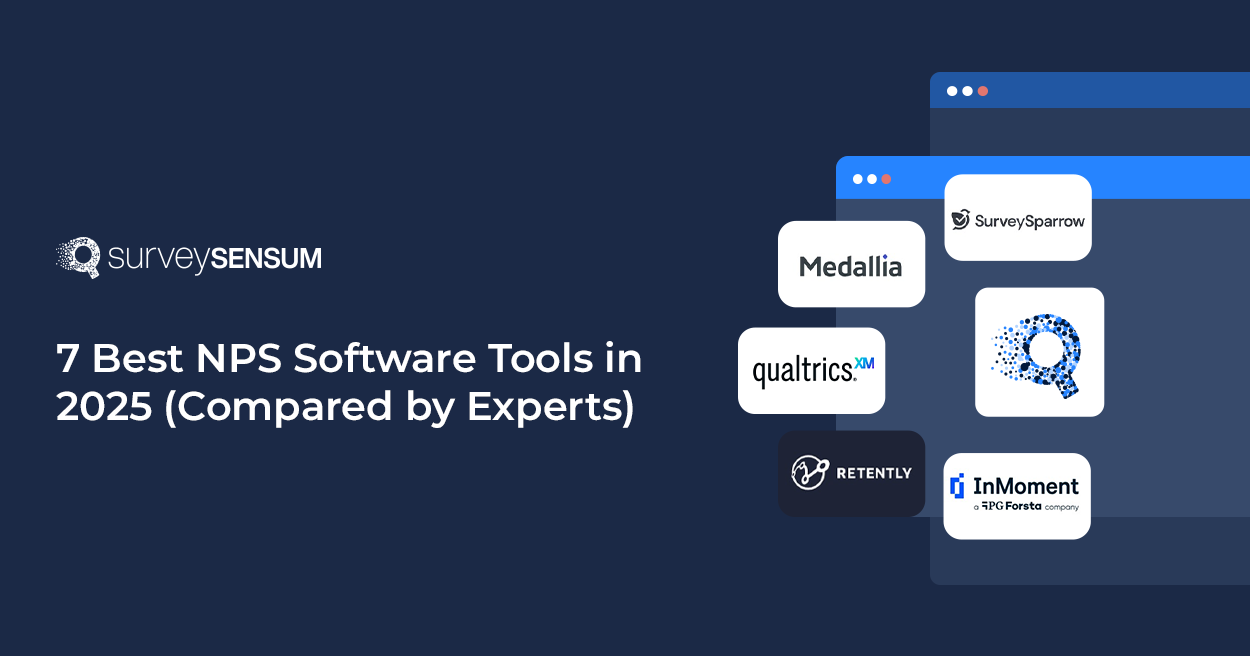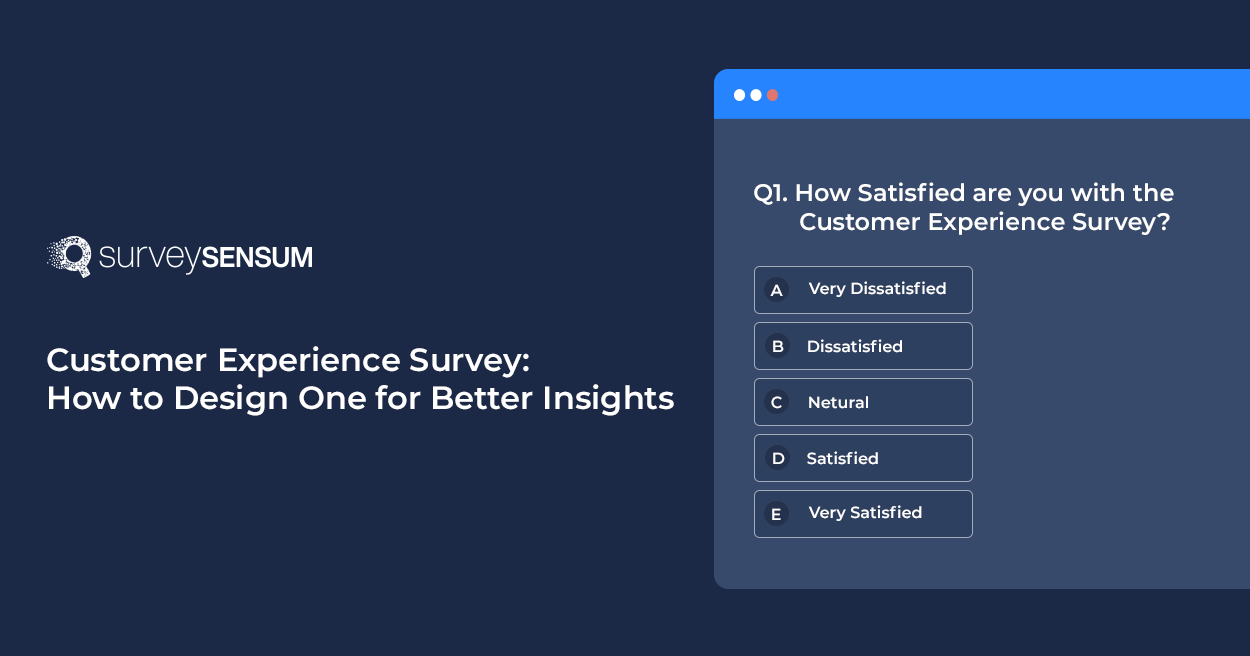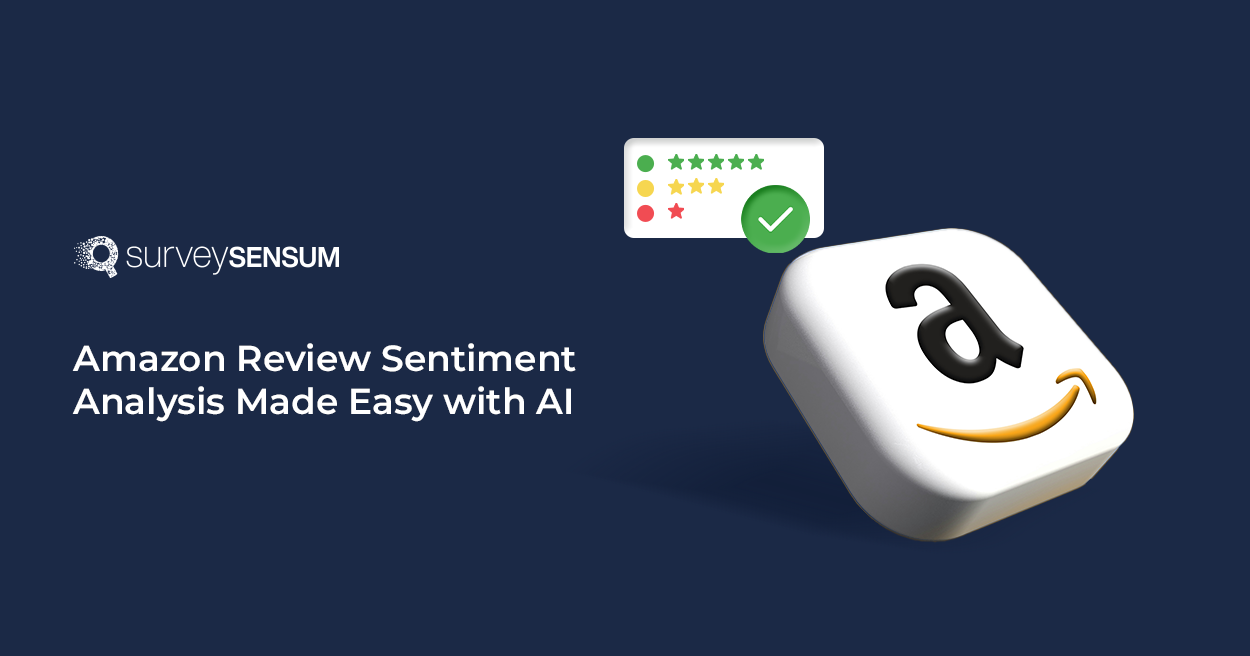

NPS aims to unravel customer’s sentiments. You can receive a score of 35 or 50 or 63 which determines how happy or unhappy your customers are.
But how can you know if it is a “good” or “bad” NPS score?
Scroll down and find out. But for that, we must first understand what NPS is and how NPS is calculated.
Net Promoter Score Defined
Net Promoter Score (NPS) is a widely used CX metric that measures customer loyalty and satisfaction by gauging how likely customers are to recommend a company, product, or service to their friends and family.
The score is calculated based on responses to a single question – “On a scale of 0-10, how likely are you to recommend our product to your friends and colleagues?”
NPS goes beyond numbers – it’s a tool that helps businesses identify areas of improvement, enhance customer experience, and drive long-term success. So, let’s understand how it is measured.
How to Measure Net Promoter Score?

To calculate NPS score, whether you are using an 11-point or 5-point NPS scale, all you need to do is,
STEP 1: Ask your customers how likely they are to recommend your product to others.
STEP 2: Then, categorize their responses into promoters (9-10), passives (7-8), and detractors (0-6).
STEP 3: Subtract % of detractors from % of promoters. This is the foundational NPS formula. Now, the NPS score can be anywhere between -100 and +100.
STEP 4: At last, benchmark your NPS score industry average.
Or instead, use the NPS calculator below. It’s totally free!
However, you don’t necessarily need to go through the process of calculating the NPS score, all you need is the best NPS software in the market.It updates scores in real time and offers detailed insights on a user-friendly dashboard.
NPS Breakdown – Promoters, Detractors & Passives
Here’s a breakdown of the Net Promoter Score.
- Promoters: These are customers who rate your product or service highly, giving a score of 9 or 10 on the NPS scale. They are extremely satisfied with their experience and are likely to become repeat customers or even brand advocates.
- Detractors: These are customers who rate your product or service poorly, giving a score of 0 to 6 on the NPS scale. They are dissatisfied with their experience and may have encountered issues or problems with your product.
- Passives: These are customers who give a neutral score, rating your product as 7 or 8 on the NPS scale. They are neither strongly satisfied nor dissatisfied with their experience.
→ Know when to send an NPS survey to generate responses!
Now that you know your NPS Score, what is the next step?
To understand if your NPS score is good or bad? Well, for that let’s first understand the two ways of approaching a good NPS score.
What Qualifies as a Good NPS Score?
To determine whether your NPS score is “good”, there are two ways of thinking about your NPS:
1. Absolute Method
Absolute NPS refers to the straightforward calculation of NPS based on the percentage of promoters, detractors, and passives without comparing it to any external benchmark or industry standard. It focuses solely on the raw score derived from the NPS survey responses within a specific timeframe or among a particular customer base.
2. Relative Method
Relative NPS involves comparing your NPS to external benchmarks such as NPS industry standards, or previous performance within your organization. It helps businesses understand how they stack up against others in the market and identify areas for improvement or competitive advantage.
An NPS score can be considered to be good only if it matches the industry average or exceeds it. If your NPS score is equal to or more than the industry average, it indicates that your customers are loyal and are willing to refer to new customers as well.
Absolute NPS: What’s a Good NPS Score?
As a thumb rule, if the NPS score is less than 0, it is a cause for worry as it is a negative NPS score. And an NPS score above 0 is considered okay as it is a positive NPS score, but it still has some further categorization, let’s take a closer look.
- NPS of 50 or Higher: This is often considered excellent and suggests that a company has a strong base of loyal customers who are highly likely to recommend its offerings to others.
- NPS score ranges from 30 to 49: This range is still regarded as good, indicating that the company has a solid foundation of satisfied customers who are generally willing to recommend it.
- NPS between 0 and 29: While positive, this range suggests room for improvement. It signifies that the company has more satisfied customers than dissatisfied ones but may not have fully tapped into its potential for customer advocacy.
Launch, analyze, and extract actionable insights from your NPS program with SurveySensum’s NPS experts!
Relative NPS: What’s a Good NPS Score?
Your NPS score is relative. There are a lot of factors associated with it. This is why the Net Promoter Score benchmark by industry becomes important.
Here is a study of NPS benchmarks that reveals the average NPS score of different industries in 2024.
What is a Good Net Promoter Score?


*Source: Retently 2024 NPS Benchmarks for B2B & B2C
Analyze and benchmark your NPS with SurveySensum’s NPS experts and stay ahead of the competition!
How to do NPS Benchmarking?
Here are the 3 proven ways of NPS benchmarking.
Compare With the Industry Average
As we said earlier in this blog, NPS is more of an industry-specific metric. So it makes sense to look at the industry average and where your NPS stands in relation to that.
It is also recommended to benchmark your NPS score against that of competitors. This method of relating an NPS score to the industry average and competitor scores is referred to as the relative method of benchmarking.
For example, in the US, the average NPS score of Health Insurance is 48. If your business is in the same line, then your NPS score should ideally be more than 48 or be in this range to be considered a good Net Promoter Score.
Compare With the Regional Average
If you are a global business, by now it would have been evident how regional differences and cultural values affect consumer decisions.
To cite an example, US customers are willing to pay a premium price for high-end trending products. Whereas, their Asian counterparts would prefer budget-friendly products that serve the purpose and have reasonable durability.
The same attitude spills over to NPS survey responses as well. The scores that customers give will be largely influenced by regional practices and cultural beliefs.
To repeat the same example of US and Asian customers, US customers are generous when it comes to giving 5-star reviews or high NPS scores. Asian customers expect extremely impressive products/services to give a high NPS score.
As a result, there will be regional imbalances in the NPS score as well. Hence, a need to benchmark NPS and compare it on a regional basis.
Without regional benchmarking, you might end up evaluating an average or Good Net Promoter Score as bad.
Compare Scores By Channels
NPS surveys are sent through diverse channels like email, social media, mobile apps, SMS, and so on. The survey response is bound to vary due to various factors.
For example, NPS email surveys usually get high responses since customers find them to be non-intrusive. Also, it is easy to fill up an email survey since it gives enough buffer time for the customer to think and update.
Other channels like SMS and in-app surveys lose out on these. However, they have their own pros and cons, which further influence the NPS scores.
In-app surveys are contextual and hence drive accurate responses, although the NPS response rate could be low.
These differences mean that the business has to populate the NPS score from various channels and compare them side-by-side to arrive at a benchmark score. Let’s now explore some factors influencing a good NPS score.
Factors Influencing a Good NPS Score
To improve your NPS score, you need to understand the factors affecting a good NPS score and primarily there are 4 factors that can influence a good NPS score, let’s discuss.
1. Niche Competition
Industries with fewer competitors or some unique offerings tend to have a higher NPS score than companies in highly competitive industries with similar offerings. For example, Tesla NPS score is 97 because it dominates the luxury electric vehicle market, leaving customers with few comparable options.
This shows that when a company stands out with a distinct offering, customers are more likely to remain loyal to the company.
2. Customer Tolerance Levels
Shortcomings are part of business, but this is also your downfall if not checked regularly and improved. Your customers’ tolerance level indicates how forgiving they are when faced with service interruptions or product inconsistencies. To improve customer tolerance level, you can:
- Add more customer touchpoints for assistance
- Enhance transparency about service issues
- Simplify accessibility and processes
3. Vendor Switching Barriers
One of the major reasons for non-SaaS companies to fetch a higher NPS score than SaaS companies is that it’s easier to infuse brand loyalty and higher tolerance as they have high switching barriers. SaaS companies face this challenge due to a low switching barrier, which means their customers can easily unsubscribe or switch to competitors with minimal costs.
This is because buyers give high NPS scores compared to end-users. After all, buyers view the purchase through a strategic lens, while users evaluate based on day-to-day functionality. For example, if you bought a new air-conditioner, you are inclined to recommend it to others even if you had a little trouble with it, partly because of confirmatory bias and largely due to high switching barriers. Here, switching costs are higher and cannot be done without a financial hit, whereas the case is different when it comes to rented AC, switching barriers are relatively low as you can switch to competitors easily.
4. Events of Global Significance
Major global or local events can temporarily disrupt customer satisfaction and expectations, significantly impacting NPS benchmarks. For instance, during the COVID-19 pandemic, businesses faced operational challenges, and customer patience was tested. A Qualtrics study revealed that the average NPS dropped by 15.2 points globally during the pandemic. Industries like travel, hospitality, and airlines saw the largest NPS drops (24 – 28 points), while industries like health insurance and fast food were less affected.
Let’s now understand why NPS is important for business growth.
The Role of NPS in Business Growth
In 2005, the London School of Economics conducted a study on customer advocacy as business growth where they found that an increase of the NPS score by 7 points equates to a 1% growth in revenue. Also, in the book “The Ultimate Question 2.0”, Fred Reichheld and his team found that companies that have adopted NPS grow twice as fast as their competitors.
These numbers highlight the importance of NPS in driving business growth and success, so let’s understand how NPS impacts the revenue and growth of your business.
1. Identifying Promoters and Detractors: By segmenting customers based on their rating, i.e., promoters, detractors, and passives, businesses can focus on each segment and create unique strategies for each. For example, converting detractors to promoters and leveraging promoters as brand ambassadors. So, instead of creating a one-plan-fits-all strategy, you can create personalized strategies for each segment.
2. Driving Customer-Centric Improvements: NPS surveys also have follow-up questions that ask customers to elaborate on their pain points. This feedback can be leveraged to improve products based on real customer feedback, identify recurring pain points to develop long-term solutions and refine customer support processes to resolve issues faster and more efficiently.
3. Reducing Churn: Tracking detractors enables businesses to take proactive measures to resolve issues before customers churn. This not only protects revenue but also maintains a positive brand reputation in competitive markets.
Now that we understand why businesses should use NPS for their growth, let’s discuss how to improve NPS effectively.
How to Improve Your Net Promoter Score?
NPS is a complex metric that differs from industry to industry based on what services you provide or products you sell. Your NPS score will tell you about all your customers’ negative and positive experiences. Though there are several tips to improve your NPS, we list down only the most important ones here.
- Collect NPS feedback at the right time
- Use aesthetically pleasing survey designs
- Include visual cues for a better understanding
- Close the loop immediately and inform them
- Identify reasons that fail you and areas where you excel
- Improve operational efficiencies and performances
- Segmentize low-score areas and give special care
- Train staff to offer better customer support
- Offer consistency and special care on common NPS issues
- Run NPS surveys at regular intervals to check the progress
- Avoid NPS gaming to ACTUALLY make a difference.
But to achieve all of these, an efficient NPS software, designed to evaluate both 11-point and 5-point NPS scales, is required to help you create NPS surveys and launch them at the right touchpoint and at the right time. Also, the tool helps share alerts to the team when a detractor shares their feedback and analyzes all the feedback.
Let’s explore some benefits of a good NPS score.
Benefits of Maintaining a Good NPS
Here are some benefits of maintaining a good NPS score.
1. Stronger Customer Loyalty: A high NPS score is a direct indicator of strong customer trust and loyalty who not only bring in repeat business but also act as brand advocates, bringing in new customers through positive word-of-mouth.
2. Increased Referrals: When customers are loyal and happy with your products or services, they are more likely to recommend your brand to friends, family, and colleagues, creating a powerful referral network that drives new customer acquisition.
3. Higher CLV: Satisfied customers spend more over their lifetime, leading to increased revenue and profitability. They’re also more open to upselling and cross-selling opportunities.
4. Improved Brand Reputation: A high NPS enhances your brand’s reputation, making it more attractive to prospective customers and partners. Positive word-of-mouth from promoters can significantly boost your credibility in the market.
5. Enhanced Operational Efficiency: Regularly gathering feedback through NPS surveys enables businesses to identify inefficiencies and address them promptly. This continuous improvement reduces operational costs and enhances customer satisfaction.
Let’s explore some tools and strategies you can leverage to track and improve your NPS.
Tools and Strategies for Tracking NPS
To effectively monitor and improve your NPS you need the right NPS tools and strategies to track NPS.
1. NPS Software: Leverage AI-enabled NPS tools like SurveySensum to create surveys, survey distribution, and analyze NPS data to extract actionable insights from raw data. These tools also offer features such as real-time reporting, automation, and integrations with CRM systems.
2. Segmentation: Segment NPS data by customer demographics, purchase behavior, or geographic regions to gain deeper insights and identify trends.
3. Closed-Loop Feedback: Actively follow up with detractors to resolve issues and track the outcomes. Use this data to improve processes and convert unhappy customers into loyal ones.
4. NPS Dashboards and Reporting: Utilize visual dashboards to track NPS trends over time. Share these insights across teams with detailed and analytical NPS reports to align efforts toward improving customer satisfaction.
5. NPS Benchmarking: Compare your NPS against industry standards to understand your position in the market. Use these benchmarks to set realistic NPS goals for improvement.
Conclusion
NPS methodology is indicative of customer satisfaction and loyalty, reflecting positively on a company’s performance and reputation. However, while a good NPS is a valuable metric, it should not be the sole measure of customer experience or business success. Businesses should complement NPS metrics with other CX metrics such as CSAT, CES, etc to gain a comprehensive understanding of their customers’ needs and preferences.
Now, gaining insights is just the beginning, you need to analyze and extract actionable insights from this feedback to improve customer retention, and to do that you need a robust customer experience management tool like SurveySensum. With this tool, you can run NPS text analysis on the gathered feedback and automate the process of extracting valuable insights. This tool will also present a detailed report on your promoter and detractors and with the help of the CX NPS experts, you can analyze this data better and derive an action plan to boost your business growth.
Frequently Asked Questions
Amazon NPS score is 73.
While 70% can be a good NPS score, it largely depends on your industry average for which you need to benchmark your NPS against your industry average. For example, if you are in the retail industry where the industry average of 63 then 70 is a good score but at the same time if you are in the insurance industry then it might not be as good as the industry average is 83.
Verizon NPS score is 37.
Well, it goes without saying that anything above 0 is a positive score. However, determining a good NPS score for your industry requires benchmarking it against your industry average.
The good NPS score for SaaS is 40.
Apple NPS score is 61.
Companies like Apple (61), Tesla (97), Amazon (73), and Netflix (67) are often cited for having some of the highest NPS scores.
Starbucks NPS score is 77.
Businesses should measure NPS at least quarterly to track changes and address issues proactively. For transactional NPS, measuring after key customer interactions (e.g., a purchase or support call) provides actionable insights.
Google NPS score is 58.

















